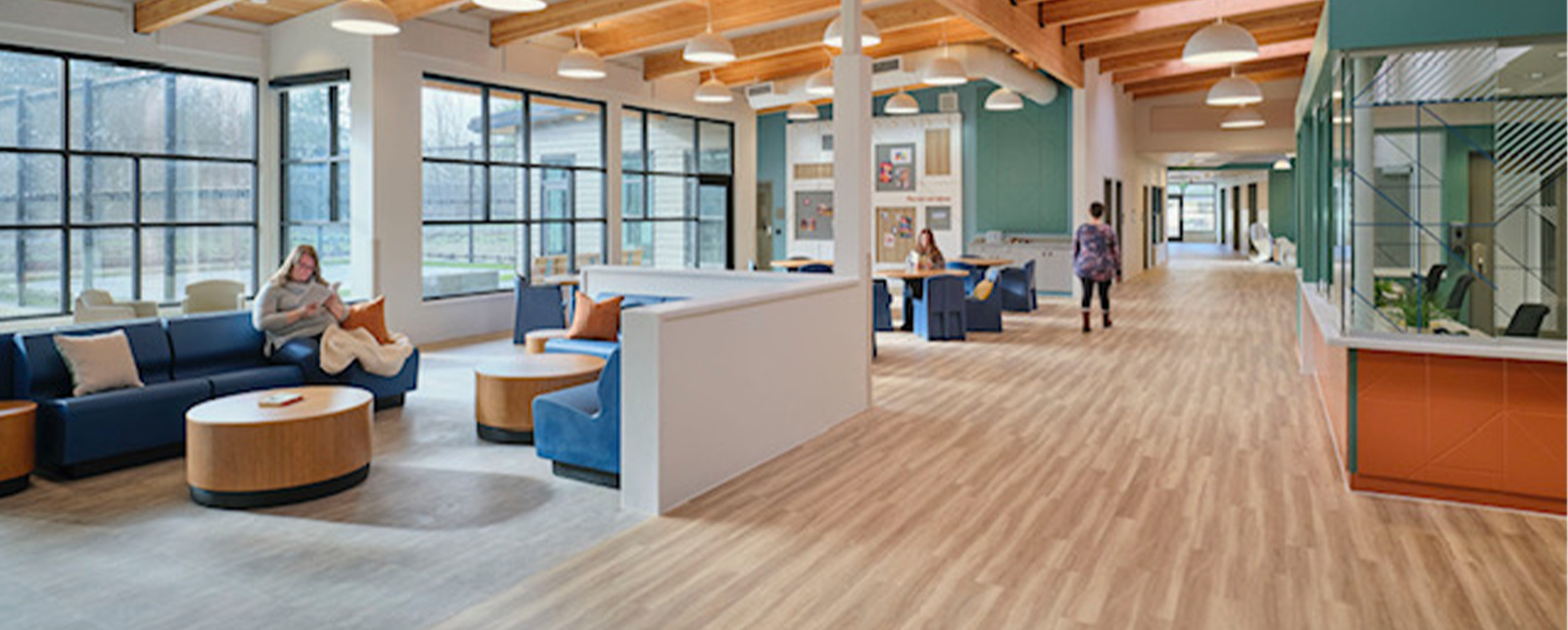
Behavioral health environments play an essential but often overlooked role in our healthcare system. These specialized medical facilities provide care and treatment for individuals struggling with anxiety disorders, depression, bipolar disorder, substance abuse, and mental illness crises. The critical issue today, is that many patients lack access, while facilities lack enough beds to keep up with those who do. As behavioral and mental health cases continue to increase, it’s important to take a deeper look at the environments built to support patients.
Can design impact patient recovery? And how can designers, contractors, architects, and suppliers work together to positively impact comfort and well-being? To find out, our colleagues at OpenSquare in Seattle hosted a panel of behavioral health provider and design experts for an in-depth discussion around this critical issue.
Here’s what we learned:
Balancing Welcome and Safety
When designing for behavioral health environments, safety isn’t just important – it’s critical. That’s because patients going through mental health treatment often feel vulnerable. Designers should look for new ways to make spaces feel welcoming while offering patients more choice and control to minimize anxiety. Putting a little more welcome into environments can go a long way toward enhancing wellbeing.
Safety also extends to each patient’s physical wellbeing. For example, our panelists agreed that behavioral health facilities should always be designed to reduce the risk of self-harm or harm to staff, family, and visitors. Provider protocols, training, and wellness are critical components for success, along with design interventions.
Design features should enhance transparency and visibility for safety. Visibility allows clear sightlines for staff to supervise patients and proactively ensure safety. Access control tools (card readers and keypads) and safety protocols help manage who can enter and exit specific areas of the facility and anti-ligature measures are universally required. In the past, these features might have made monitoring easier without further consideration into the patient experience. Today, design also incorporates open gathering areas that encourage better socialization for accelerated recovery.
Comfortable Welcoming Spaces
Behavioral health treatment is often stressful. To increase patient comfort and provider wellbeing, designers should consider creating welcoming, home-like environments that support activities known to reduce stress like yoga, meditation, and art making. Introducing design elements that enhance comfort like warm, bright earthy tones and soft furniture can make historically clinical environments feel more hospitable. Non-threatening environments contribute to recovery, where patients can feel relaxed, comfortable and “at home” such as rooms with en suite bathrooms and access to nature can all positively impact patients’ mental and emotional wellbeing.
Consider the Senses
The more designers can infuse emotional and mental stability into each space, the better the healing process becomes. This can also be achieved by engaging the senses - quiet spaces for meditation or relaxation, a variation in lighting sources and qualities to promote calming settings to help balance the patient's mood and promote better sleep, along with artwork and music to encourage a greater sense of wellbeing.
Flexibility in spaces that promote social interaction, such as communal areas where patients can interact with each other and participate in group activities mentioned earlier, can be achieved with furniture pieces that can be moved, albeit with concerted effort.
When safety, comfort, and healing are prioritized, behavioral health environments can become catalysts for healing. These spaces give patients more than the tools and space they need to feel their best. They also offer caregivers an environment where they can provide the best care possible. However, this takes a specialized team that has the experience and expertise in designing behavioral health environments to ensure that you create spaces that are both functional and conducive to the patient's recovery journey. The primary objective is to create healing spaces that is both welcoming, engaging and safe.
More to Come
Our conversation concluded where we began, recognizing the lack of adequate behavioral health resources to support the State of Washington and the country, with positive encouragement to be aware of pending legislation and support additional resources whenever possible.
One Workplace Healthcare team members are available for behavioral health design consults and conversations. Please reach out with questions any time.
And stay tuned, we will continue the conversation.
Hero image: Civil Center for Behavioral Health at Maple Lane by BCRA